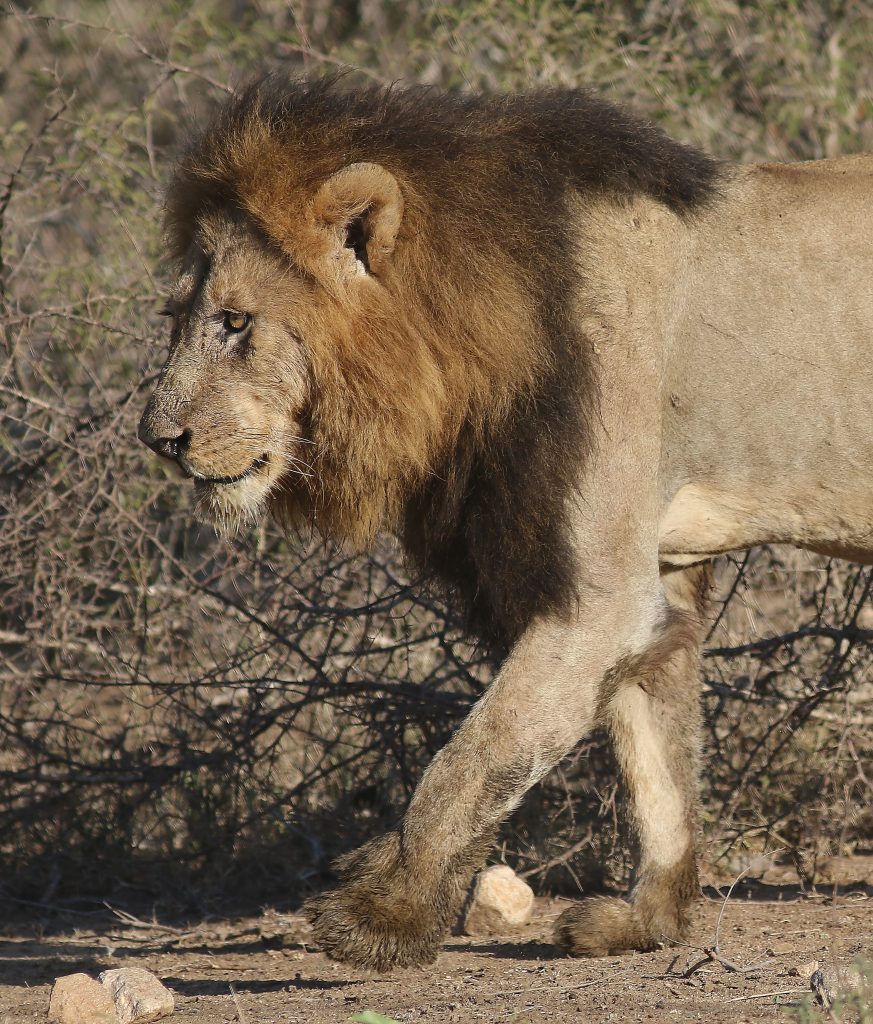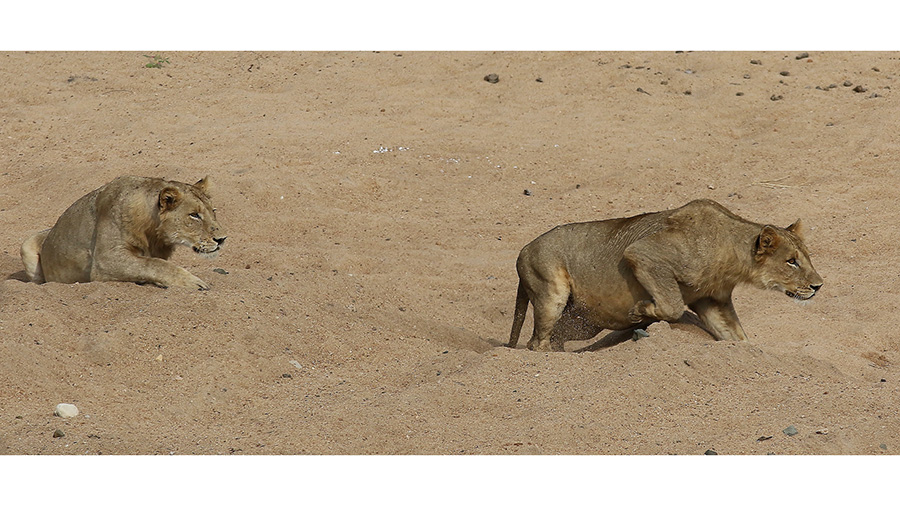So you’ve heard about the incredible work being done to conserve lions, but did you know that it also involves international agreements? Lion conservation is not just a local effort, it extends far beyond national boundaries as the global community comes together to protect these majestic creatures. In this article, we will explore the importance of international agreements in lion conservation and discover how they play a crucial role in safeguarding the future of this iconic species.
Introduction
Lion conservation refers to the efforts and initiatives aimed at protecting the wild lion population and their habitats. It involves implementing strategies and measures to ensure the long-term survival and wellbeing of lions, which have been facing numerous threats over the years. International agreements play a significant role in lion conservation by fostering collaboration among countries, establishing conservation frameworks, and promoting collective action towards protecting these majestic creatures.
Definition of Lion Conservation
Lion conservation entails various activities aimed at safeguarding the lion population, their habitats, and ecological balance. It involves maintaining suitable habitat conditions, managing human-wildlife conflicts, combating poaching and illegal wildlife trade, minimizing retaliatory killings, and addressing the impacts of climate change on lions. Effective lion conservation strategies require a holistic approach that takes into account the ecological, social, and economic aspects of conservation.

Importance of Lion Conservation
Lion conservation is of critical importance for several reasons. Lions are iconic species that play a vital role in maintaining the balance of ecosystems. They serve as apex predators, regulating herbivore populations and preventing overgrazing, which can lead to habitat degradation. Additionally, as keystone species, lions have significant cultural and socioeconomic value, attracting tourists and contributing to local economies through nature-based tourism. The conservation of lions also reflects our commitment to biodiversity conservation and the protection of endangered species.
Role of International Agreements
International agreements play a crucial role in lion conservation by providing a framework for cooperation, promoting conservation efforts, and addressing transboundary issues. These agreements serve as platforms for countries to come together, exchange knowledge and technologies, and develop strategies for lion conservation. They help in the establishment and enforcement of conservation laws, facilitate resource sharing, and encourage collective action among nations. By fostering collaboration, international agreements enhance the effectiveness of lion conservation on a global scale.

Threats to Lion Conservation
Habitat Loss and Fragmentation
One of the most significant threats to lion conservation is habitat loss and fragmentation. As human populations grow and expand, lion habitats are being encroached upon by agriculture, urbanization, and infrastructure development. The loss and fragmentation of their habitats disrupt their natural behavior patterns, limit their movement, and isolate populations, making them more vulnerable to other threats.
Human-Wildlife Conflict
Human-wildlife conflict poses a significant challenge to lion conservation. As lion habitats overlap with human settlements, conflicts arise due to livestock predation and threats to human safety. Retaliatory killings by local communities are common, as people resort to protecting their livelihoods and safety. Addressing human-wildlife conflict requires the implementation of mitigation measures such as predator-proof enclosures, early-warning systems, and compensation schemes.
Poaching and Illegal Wildlife Trade
Poaching and the illegal wildlife trade have devastating impacts on lion populations. The demand for lion parts, such as bones, skins, and teeth, drives poaching activities. Lions are specifically targeted for their bones, which are used in traditional medicine in some cultures. To combat poaching and illegal wildlife trade, stricter law enforcement, international collaboration, and public awareness campaigns are necessary.
Retaliatory Killing
Retaliatory killing is another threat faced by lions, particularly in areas where human-wildlife conflicts are prevalent. When lions prey on livestock, farmers often resort to killing them in retaliation. This practice not only harms lion populations but also perpetuates a cycle of conflict. Efforts to reduce retaliatory killings include improving livestock management practices, implementing compensation schemes, and fostering community engagement in conservation initiatives.
Climate Change
The impacts of climate change also pose a significant threat to lion conservation. Changing weather patterns, including prolonged droughts and shifts in rainfall patterns, can lead to a decline in prey availability. Reduced prey populations can negatively impact lion populations, leading to increased competition, reduced reproductive success, and decreased overall survival rates. Addressing climate change impacts requires incorporating resilience strategies into lion conservation plans, such as habitat restoration and sustainable land use practices.
International Agreements for Lion Conservation
Convention on International Trade in Endangered Species of Wild Fauna and Flora (CITES)
CITES is an international agreement that aims to regulate international trade in endangered species, including lions. It provides a legal framework for controlling the import, export, and possession of lion specimens. Through CITES, countries work together to ensure that the trade in lions and their parts is sustainable, legal, and not detrimental to the survival of the species.
The Convention on Biological Diversity (CBD)
The CBD is a global treaty that promotes the conservation of biological diversity, the sustainable use of its components, and the fair and equitable sharing of benefits arising from genetic resources. Lions are considered an integral part of biodiversity, and the CBD helps in the protection and conservation of lion populations by encouraging countries to develop national strategies and action plans.
United Nations Framework Convention on Climate Change (UNFCCC)
The UNFCCC aims to stabilize greenhouse gas concentrations in the atmosphere to prevent dangerous human interference with the climate system. Lions, like all other wildlife, are susceptible to the impacts of climate change. By addressing climate change through collective action and mitigation strategies, the UNFCCC indirectly supports lion conservation efforts.
The International Union for Conservation of Nature (IUCN)
The IUCN is a global network of governments, civil society organizations, and scientists dedicated to conserving nature and ensuring the sustainable use of natural resources. As the world’s leading authority on conservation status assessments, the IUCN plays a crucial role in the conservation of lions by conducting research, providing technical guidance, and advocating for the protection of lion populations and their habitats.
The Convention on Migratory Species (CMS)
The CMS aims to conserve migratory species and their habitats. Although lions are not migratory species in the traditional sense, some lion populations do exhibit seasonal movements. The CMS facilitates cooperation among countries in managing and protecting these transboundary movements, ensuring that the necessary conservation measures are in place to safeguard lion populations during their migratory journeys.

Efforts for Lion Conservation
Community-Based Conservation Programs
Community-based conservation programs involve engaging local communities in conservation initiatives to promote their active participation and benefit-sharing. These programs empower communities to become stewards of their natural resources and encourage sustainable practices that benefit both people and wildlife. By involving local communities, these programs foster a sense of ownership and promote long-term conservation efforts.
Protection and Expansion of Protected Areas
Protected areas play a crucial role in lion conservation as they provide safe havens for lion populations and other wildlife. Efforts to protect and expand protected areas are essential for securing suitable habitats and minimizing human-wildlife conflicts. Strengthening the management of existing protected areas and establishing new protected areas are key strategies in lion conservation.
Anti-Poaching and Law Enforcement Measures
Anti-poaching and law enforcement measures are vital for combating illegal activities targeting lions. Enhanced patrolling, intelligence gathering, and collaboration among law enforcement agencies are necessary to deter poachers and disrupt illegal wildlife trade networks. Strengthening legislation and penalties related to wildlife crimes is also crucial in deterring poaching and ensuring the protection of lions.
Conservation Education and Awareness Programs
Conservation education and awareness programs are instrumental in shaping attitudes, raising awareness, and mobilizing public support for lion conservation. These programs aim to educate communities, schools, and the general public about the ecological and socioeconomic importance of lions and the need to conserve them. By fostering a sense of responsibility and inspiring behavior change, conservation education programs contribute to long-term conservation efforts.
Collaboration with Local Communities and Indigenous Peoples
Collaboration with local communities and indigenous peoples is vital for successful lion conservation. Recognizing and respecting the traditional knowledge and practices of local communities can enhance conservation efforts and foster sustainable coexistence between people and lions. By involving local communities as partners, conservation initiatives become more effective, as they address local priorities and incorporate cultural values.
Success Stories in Lion Conservation
Great Plains Foundation and Northern Rangelands Trust in Kenya
The Great Plains Foundation and the Northern Rangelands Trust in Kenya have implemented successful community-based conservation programs that prioritize lion conservation. By engaging local communities in conservation efforts, these organizations have reduced human-wildlife conflict, facilitated sustainable land management practices, and fostered coexistence between lions and local communities.
Ruaha Carnivore Project in Tanzania
The Ruaha Carnivore Project in Tanzania has made significant progress in lion conservation through its research, monitoring, and community engagement initiatives. By studying lion behavior and ecology, implementing innovative anti-poaching strategies, and working closely with local communities, the project has contributed to the recovery and protection of lion populations in the Ruaha landscape.
Giraffe Conservation Foundation in Zimbabwe
The Giraffe Conservation Foundation in Zimbabwe has played a crucial role in lion conservation by focusing on the protection and restoration of lion habitats. By collaborating with local communities, conducting research, and implementing conservation programs, the foundation has contributed to the recovery and expansion of lion populations in key areas of Zimbabwe.
Hwange Lion Research Project in Zimbabwe
The Hwange Lion Research Project in Zimbabwe conducts critical research on lion populations in the Hwange National Park. Through its research and monitoring activities, the project aims to better understand lion behavior, population dynamics, and threats to lion survival. The insights gained from this research help inform management decisions and conservation strategies to protect lion populations in the region.
Cheetah Conservation Fund in Namibia
The Cheetah Conservation Fund in Namibia, although primarily focused on cheetah conservation, also contributes to lion conservation efforts. By addressing the overlapping issues faced by cheetahs and lions, such as human-wildlife conflict, habitat loss, and illegal wildlife trade, the organization indirectly supports lion conservation initiatives and fosters sustainable coexistence between lions and local communities.

Challenges and Limitations
Lack of Funding and Resources
One of the major challenges in lion conservation is the limited availability of funding and resources. Conservation efforts require significant financial investments, ranging from research and monitoring activities to community engagement and law enforcement measures. Insufficient funding can hinder the implementation of effective conservation strategies and limit the capacity to address emerging threats.
Political Will and Enforcement
Political will and institutional commitment are essential for the successful implementation and enforcement of lion conservation initiatives. The absence of strong political support can lead to weak enforcement of wildlife protection laws and inadequate investment in conservation efforts. Developing effective policies, legislation, and enforcement mechanisms is essential to overcome these challenges and secure the future of lions.
Corruption and Illegal Wildlife Trade Networks
Corruption and the presence of illegal wildlife trade networks pose significant challenges to lion conservation. Weak governance, inadequate law enforcement, and the involvement of organized criminal networks can undermine conservation efforts and perpetuate illegal activities. Strengthening anti-corruption measures, improving law enforcement capabilities, and enhancing international cooperation are necessary to combat these challenges.
Conflicts between Local Communities and Conservationists
Conflicts between local communities and conservationists can arise due to divergent interests, cultural differences, and resource competition. These conflicts can hinder the success of lion conservation efforts, as they create barriers to collaboration and engagement. Promoting dialogue, understanding local perspectives, and integrating community priorities into conservation plans can help bridge these gaps and build successful partnerships.
Limited Collaboration and Information Sharing among Countries
Limited collaboration and information sharing among countries present challenges to lion conservation. Lions are transboundary species, and their conservation requires coordinated efforts across borders. Insufficient sharing of data, knowledge, and best practices hampers the effectiveness of conservation strategies. Strengthening international collaborations, promoting knowledge exchange platforms, and facilitating information sharing are key steps to address this challenge.
Future Directions
Enhanced International Cooperation
Enhanced international cooperation is crucial for the future of lion conservation. By fostering collaboration among countries, sharing experiences, and jointly implementing conservation strategies, we can maximize the impact of our efforts. International partnerships can facilitate resource mobilization, technological advancements, and coordinated action, ensuring the long-term survival of lions.
Increased Funding and Resources Allocation
Addressing the funding and resource limitations in lion conservation is essential for future success. Increased investment in conservation, both by governments and private entities, can significantly enhance conservation outcomes. Governments should prioritize conservation funding and explore innovative financing mechanisms, while private entities can contribute through corporate social responsibility initiatives and philanthropic support.
Long-Term Sustainable Development Strategies
Integrating lion conservation into long-term sustainable development strategies is critical for ensuring the wellbeing of both people and lions. By adopting a holistic approach that considers the socioeconomic aspects of communities living alongside lions, we can develop strategies that promote resilience, economic growth, and coexistence. Sustainable land management, alternative livelihood options, and green economy initiatives are key components of these strategies.
Addressing Climate Change Impacts
Given the increasing impacts of climate change, addressing its effects on lion populations is paramount. Incorporating climate change adaptation and resilience strategies into lion conservation plans can help mitigate the ecological disruptions caused by changing climatic conditions. Initiatives such as habitat restoration, water management, and sustainable land use practices can enhance the resilience of lions and their habitats.
Empowering Local Communities
Empowering local communities to become champions of lion conservation is vital for long-term success. By involving communities in decision-making processes, providing access to education and skills training, and creating economic opportunities, we can foster a sense of ownership and responsibility towards lion conservation. Empowered communities are more likely to embrace sustainable practices and become stewards of their natural resources.

Conclusion
In conclusion, lion conservation is an essential endeavor that requires concerted efforts at local, national, and international levels. Lions play a crucial role in maintaining ecosystem balance and contribute to the cultural and socioeconomic fabric of the regions they inhabit. International agreements serve as important vehicles for cooperation and collaboration, facilitating collective action and resource sharing among countries. While various threats and challenges persist, success stories and ongoing efforts provide hope for the future of lion conservation. It is our collective responsibility to conserve and protect these majestic creatures, ensuring that future generations can continue to admire the beauty and ecological significance of lions.

